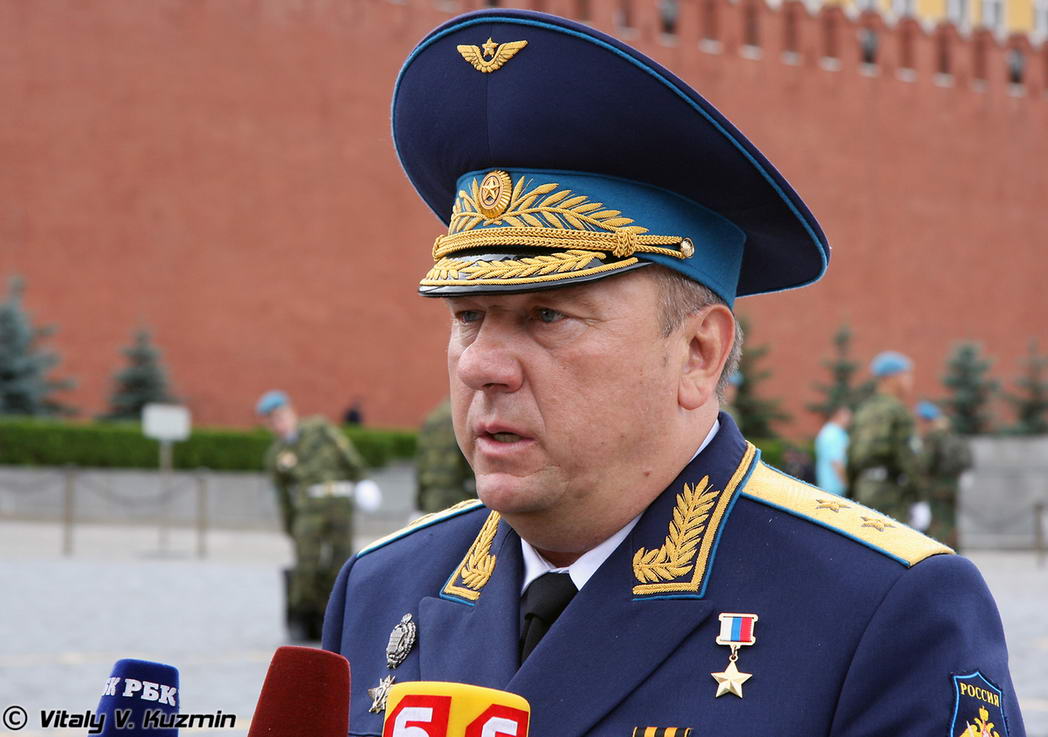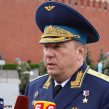
Shamanov Signals Reform Reversals in the VDV
Publication: Eurasia Daily Monitor Volume: 10 Issue: 16
By:

A public dispute about the condition of the Russian Armed Forces has spilled over into the question of awarding an honorific title to an elite unit in the Airborne Forces (Vozdushno-Desantnye Voyska—VDV). Attributing the honorary “Preobrazhenskiy” title to a present-day military unit for some critics appeared to overstate existing levels of combat capability and combat readiness. However, the dispute itself serves to highlight much more serious issues facing the VDV as well as the extent to which it may be able to resolve some of the setbacks it has encountered during the reform and modernization process (Interfax, January 14).
The dispute was triggered late last year following remarks by the former Chief of the General Staff, Army-General (retired) Yury Baluyevskiy, who stated that no units in the modern Russian Armed Forces are worthy of such a prestigious honor. By December 18, 2012, the VDV commander, Colonel-General Vladimir Shamanov, had nominated the 45th Spetsnaz Regiment of the VDV, based at Kubinka near Moscow, to possess the honorific “Preobrazhenskiy,” which he based on the location of the unit close to the historic village of Preobrazhenskiy where Peter the Great had established one of his earliest “boy-soldier” regiments. Shamanov obliquely referred to Baluyevskiy’s criticism stating: “I would like to say that people should think before they speak. There are regiments in the Armed Forces that are worthy of that honorific” (Interfax, December 18, 2012).
Despite his struggle to secure such high honors for the VDV, Shamanov knows that all is not well within the elite Airborne Forces. Some of the initiatives he is either publicly backing or advancing himself to further change the VDV supply evidence that the reform pursued under former Defense Minister Anatoly Serdyukov is now being actively reversed in key areas. One of these initiatives is to replace reconnaissance companies with reconnaissance battalions. “The classic divisional organizational structure is ‘three-way’—in other words in three regiments. In Soviet times all divisions had three regiments. Nowadays our divisions (diviziya) each have two regiments—a situation that is clearly insufficient when formation personnel are engaged in independent combat actions,” Shamanov affirmed. In his view, a reconnaissance company is inadequate for an airborne assault division. This proposal to expand the reconnaissance elements in the VDV to battalions features among a number of proposals that now have the backing of the General Staff (RIA Novosti, January 9; Vzglyad Online, December 26, 2012).
Shamanov also wants to see the introduction of more computer-based technology in the VDV and in its training; the transition to and adoption of network-centric warfare capabilities, including harnessing the potential of unmanned aerial vehicles (UAVs); and even an insistence that entrants to the VDV should speak a second language. But the table of organization and equipment (TOE) established in recent years, which survived the reform largely unscathed, also appears subject to change: “We have decided to restore repair companies to regiments and divisions. The decision has been made to reinstate the officer position of deputy company commander for educational work in companies and above, but recruited not from among special training establishment graduates but from commanders who show an inclination toward the work,” the VDV commander noted (Interfax, January 14).
Some of these changes stem from discredited parts of the “Serdyukov reform,” or more exactly TOE experiments that failed. The officer posts for educational work in companies and above were abolished by Serdyukov, despite the failure to introduce sufficiently improved non-commissioned officers (NCOs) into the Armed Forces, including within the VDV. With the NCO experiment still running, and their numbers too low to make any real impact, such reform reversals may constitute stop gap measures. VDV commanders had also lamented the abolition of the repair companies as this served to limit the capability of the Airborne Forces to be deployed and sustained in the field. These TOE changes signal an appetite to correct some of the most obvious problems encountered as a result of the four years of military reform (see EDM, January 22).
Shamanov also wants to restore the Soviet pattern of subordinating army aviation units to the VDV. He said plans have been drawn up to conduct an experiment at the Ulyanovsk-based 31st Airborne Assault Brigade to incorporate a helicopter regiment of 40 Mi-8s and 20 Mi-24s. The aim is to place one or two heavy helicopter regiments at the disposal of VDV brigade commanders. This will be complemented with a three- to five-year research period to examine their use in a number of climactic conditions ranging from the Arctic to Central Asia. Shamanov envisages further change to support the role of the VDV in the Collective Security Treaty Organization (CSTO): “We have asked the General Staff to restore the post of VDV deputy commander for peacekeeping operations and the Collective Rapid Reaction Forces, with a compact structure that would enable that official, by decision of the president, essentially to make an immediate start on implementing his appointed tasks” (RIA Novosti, January 9).
Shamanov understands that many of these changes aim to improve the VDV but are only possible due to the ousting of Serdyukov. He advocates having a say in the modern equipment procured for the VDV, while acknowledging that he is in no position to decide such issues. “That is probably right. But at the same time I should have the right to a vote. There was no actual dialogue with the previous defense ministry leadership,” he observed (Interfax, December 18). Such changes, according to Shamanov stem from the fact that new Defense Minister Sergei Shoigu is engaging in dialogue with commanders, and that will inevitably result in numerous corrections to the reforms conducted in recent years.




